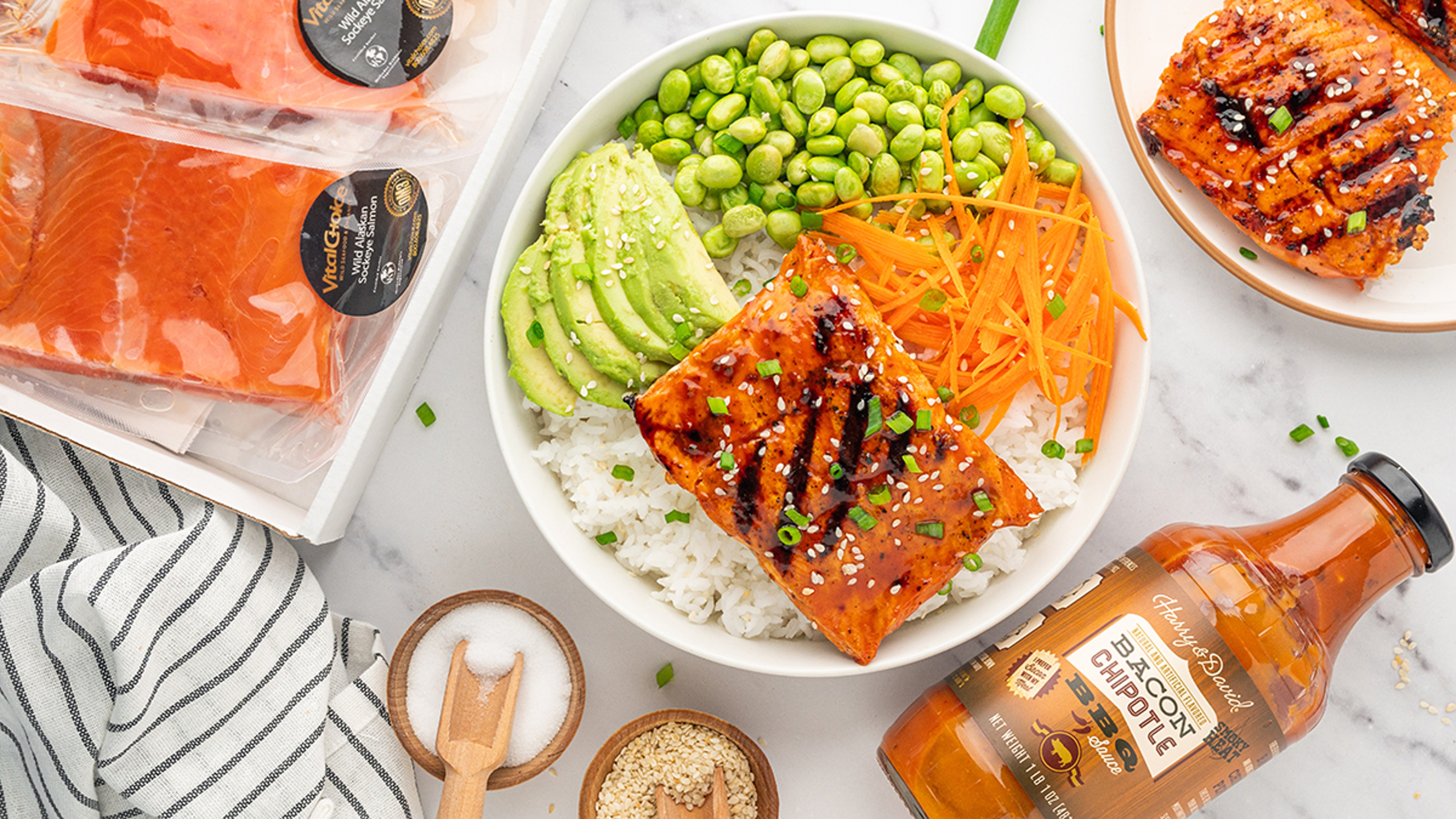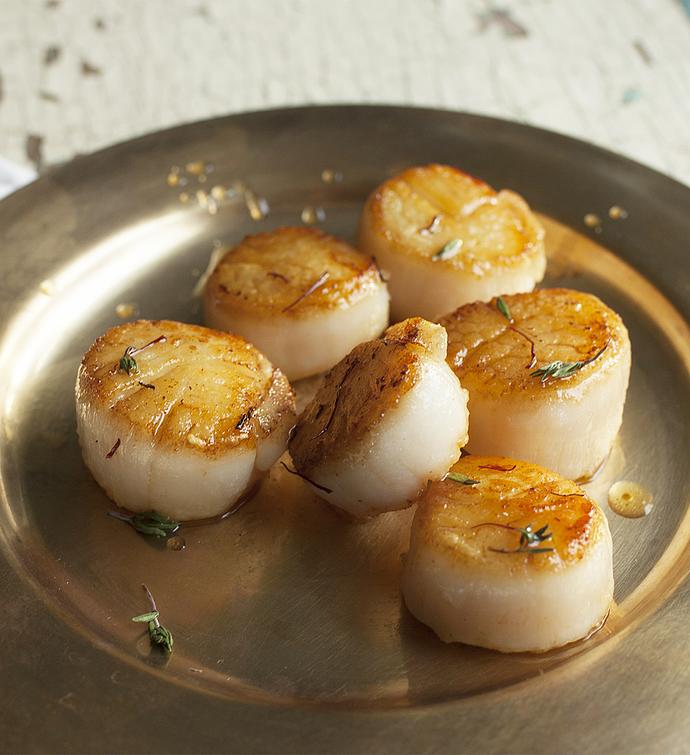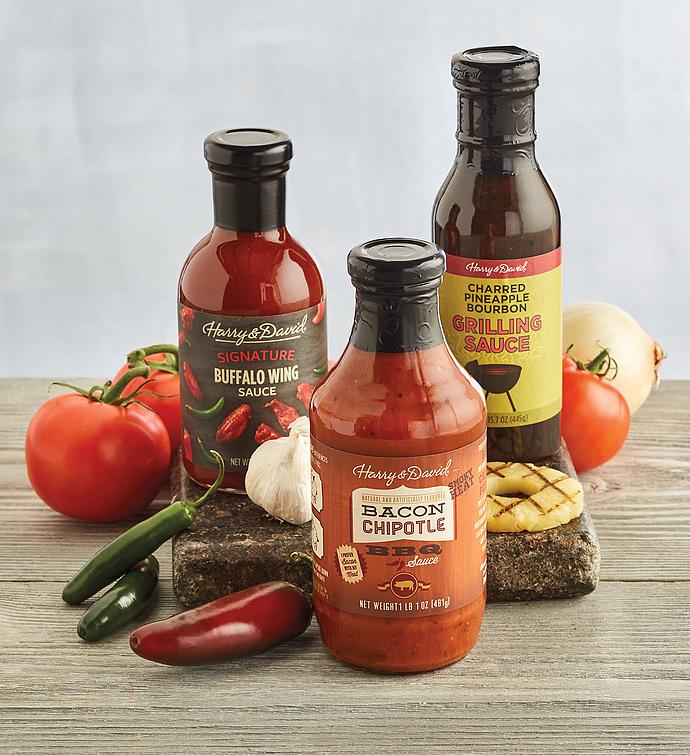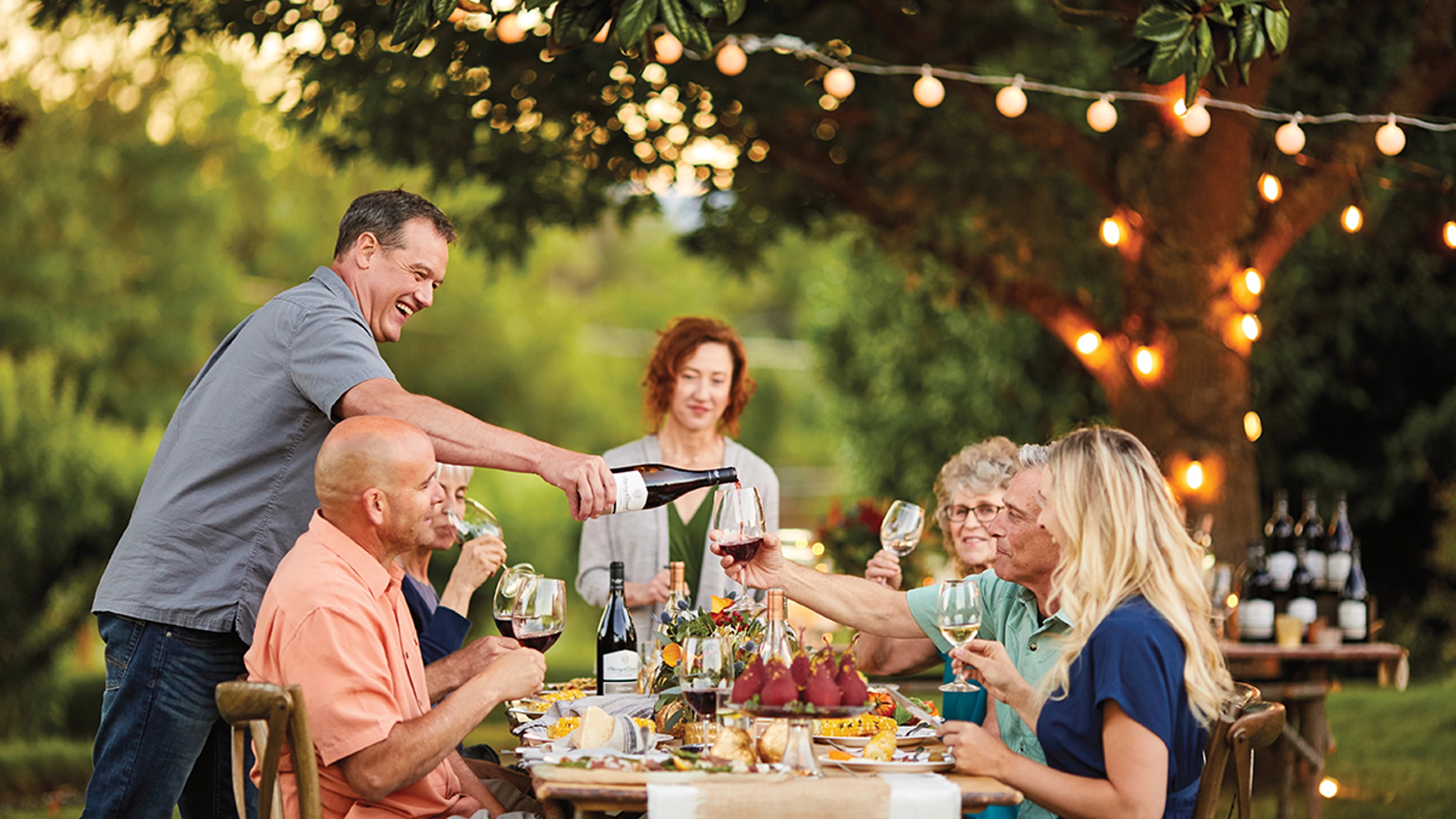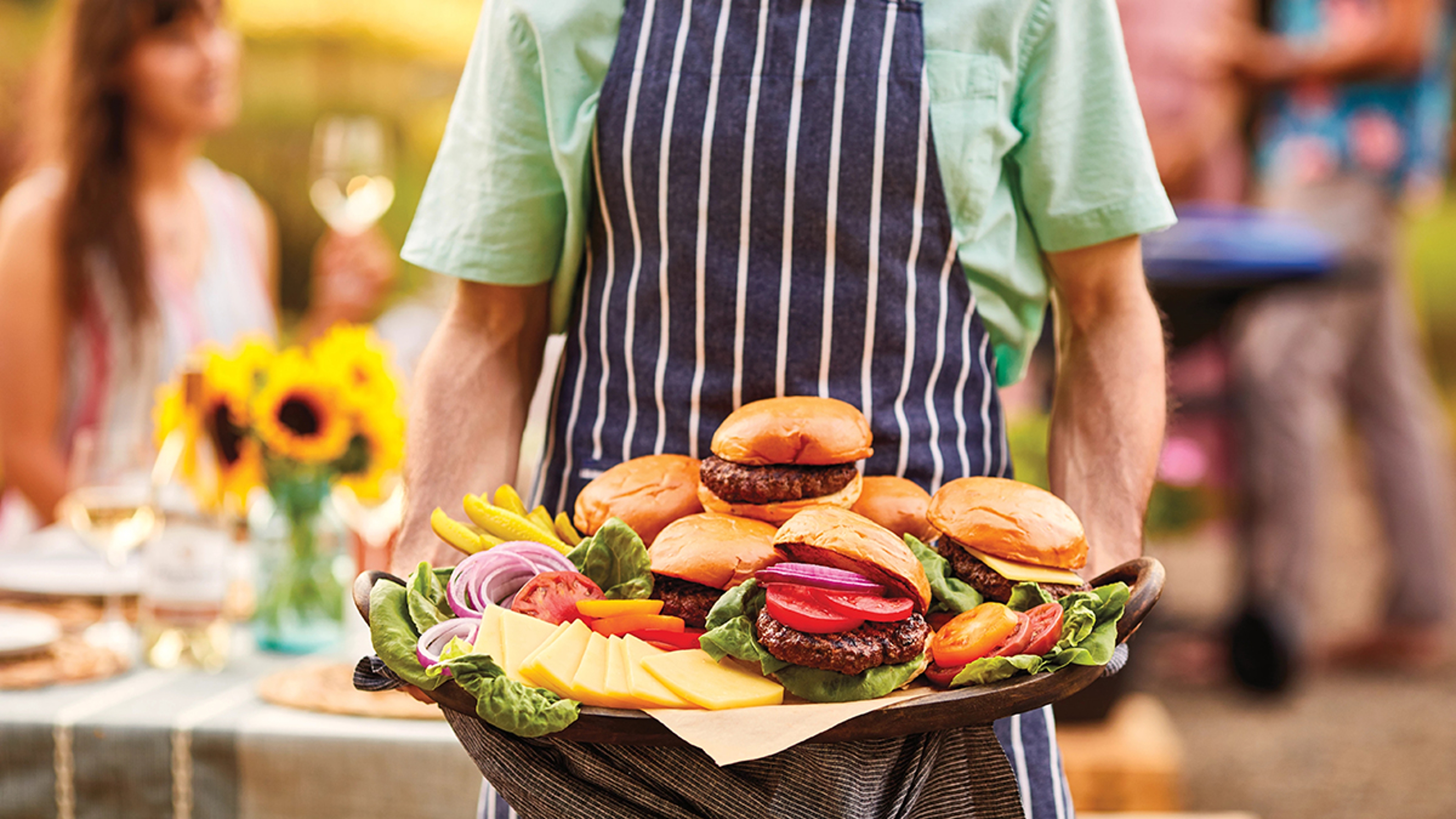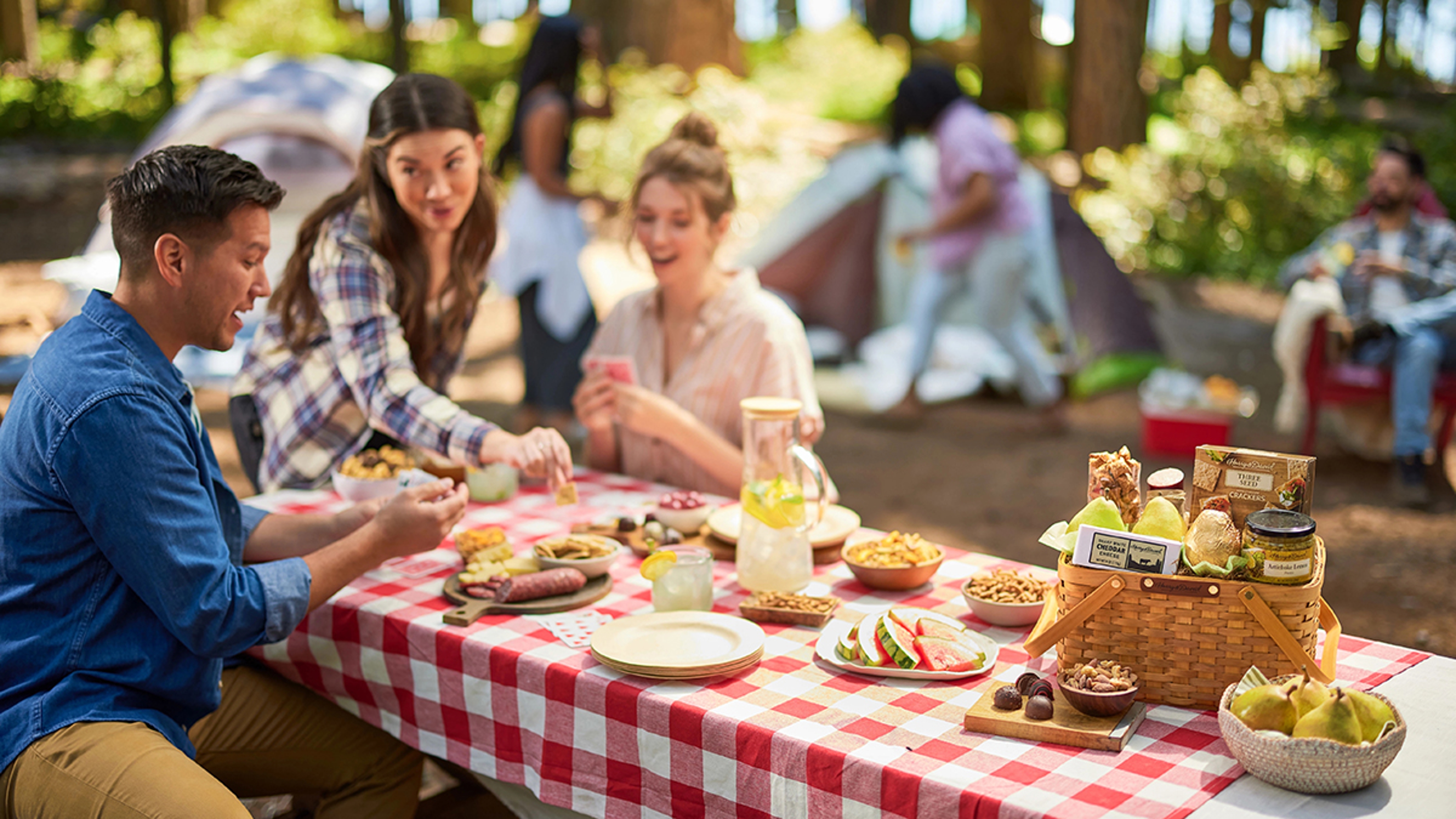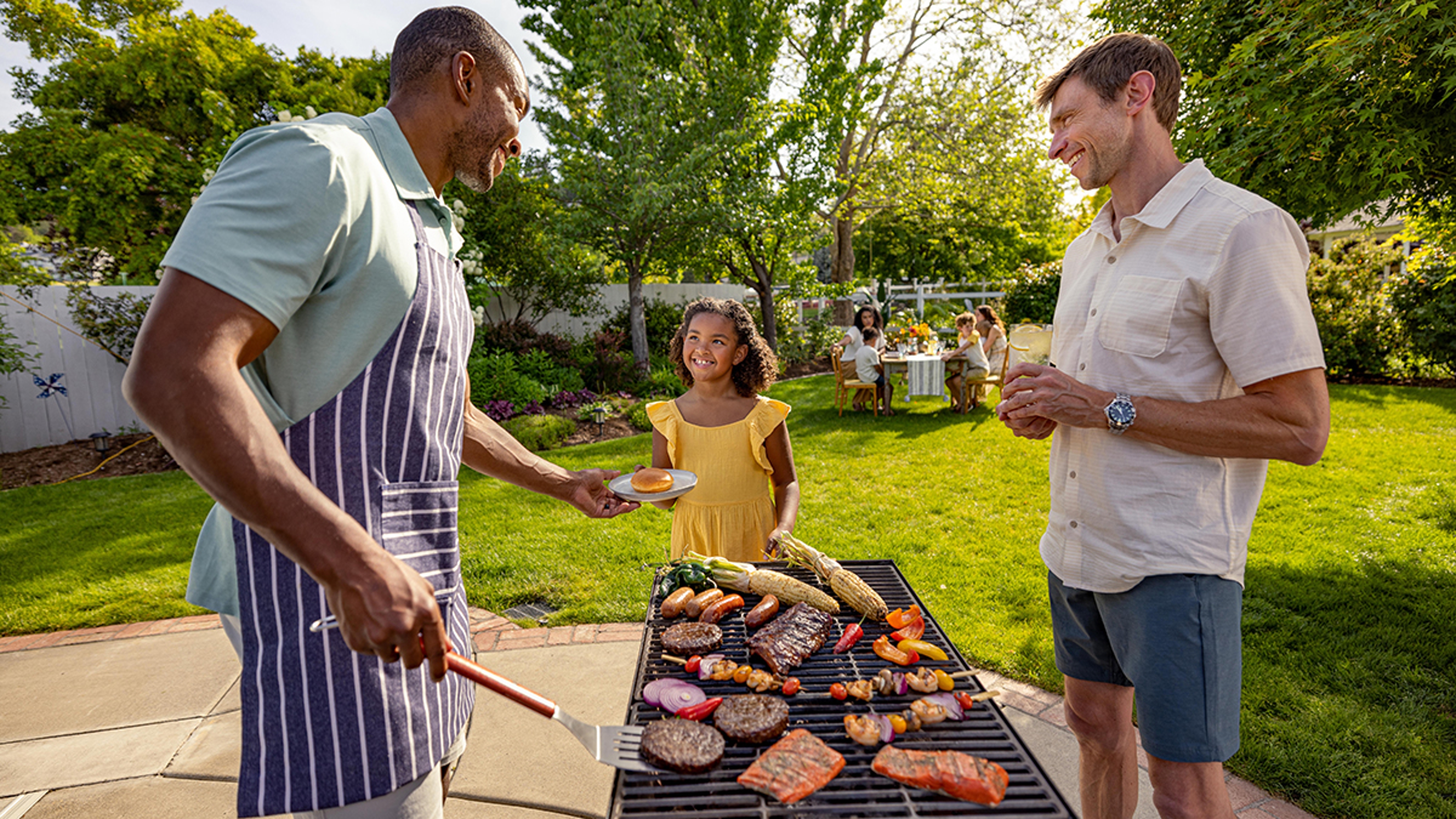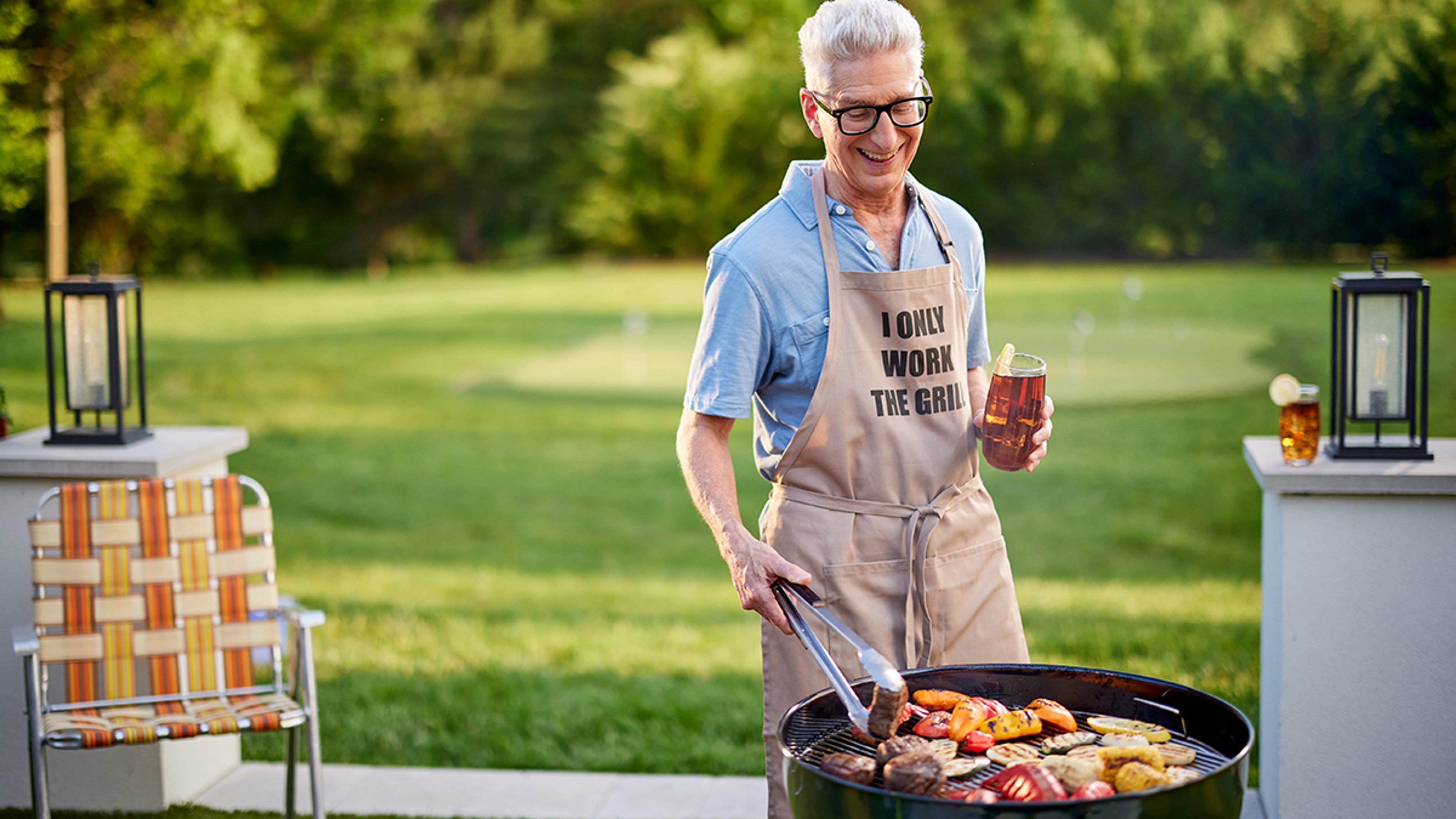Grilling, Barbecuing, and Smoking: What’s the Difference?
Let’s explore mastering these three meaty methods.
May 30, 2025
Summer’s here, and the air is thick with the scents of sizzling meat, fragrant herbs, and smoking wood. But is your neighbor grilling, barbecuing, or smoking?
While these terms often get used interchangeably, they mean very different things — and knowing the difference can help you cook smarter and turn every backyard meal into a mouthwatering success.
Grilling: The go-to for quick, bold flavor
From flame-kissed steaks to garlicky shrimp skewers, grilling is all about high heat and fast cooking — think “hot and quick.” Food sears directly over flames of 400°F to 550°F, creating a juicy interior, a charred crust, and grill marks so perfect they often look fake — making your meal even more crave-worthy. It’s a full-on sensory experience: the sizzle, the smoke, the aroma of fire meeting fat.

How to grill:
Preheat your grill for 10 to 15 minutes, then brush and oil the grates to ensure even heat and prevent sticking.
Place quick-cooking land and sea proteins like steaks, burgers, shrimp, or salmon directly over your heat source to lock in juices and create caramelization.
Flip meat only once for maximum flavor and juiciness, and never – I repeat, NEVER – press with a spatula because it can cause the meat to dry out.
Set up a two-zone grill when you can: a hotter side for searing, and a cooler side for finishing.
READ MORE: How to Grill Everything
Grill this:
Amp up the flavor, char, and fun of any gathering with grill-ready Raspberry-Chipotle Ribeyes or Bourbon-Peppercorn Marinated Steaks. Each comes pre-marinated in a sweet-savory sauce — just bring your own fire.
Add surf to that turf with wild Copper River sockeye salmon or Chilean seabass. Scorch either skin-side down to lock in moisture or toss lemon slices or herbs on the grill for extra flavor.
Three mouthwatering grill recipes
Where grilling began: Grilling is our oldest cooking method, dating back to when early man first dropped meat into fire and discovered flame-borne flavor. Since then, countless cultures around the world have developed their own grilling traditions — from asado in Argentina to yakitori in Japan — each sharing the common thread of speed, smoke, and delectable sear that only an open flame can provide.
Barbecuing: The art of low, slow, and done just right
If grilling equals charred crusts and juicy centers, barbecuing is its “low-and-slow” counterpart: think tender pork shoulder, glazed ribs, and brisket that slices like butter. It’s a technique that relies on indirect heat, lower temps (225°F to 275°F), and long cook times, transforming tough cuts into tender, smoky perfection.
How to barbecue:
Set up an area of “indirect heat” by piling coals on one side and cooking on the other; for gas grills, light just one burner.
Use a drip pan to catch juices and prevent flare-ups, which are common during longer cooks.
Plan on 1 to 1½ hours of cooking time per pound for large cuts like brisket or pork shoulder and shorter periods for most seafood.
Rotate or reposition larger cuts occasionally to avoid hot spots and ensure even cooking throughout.
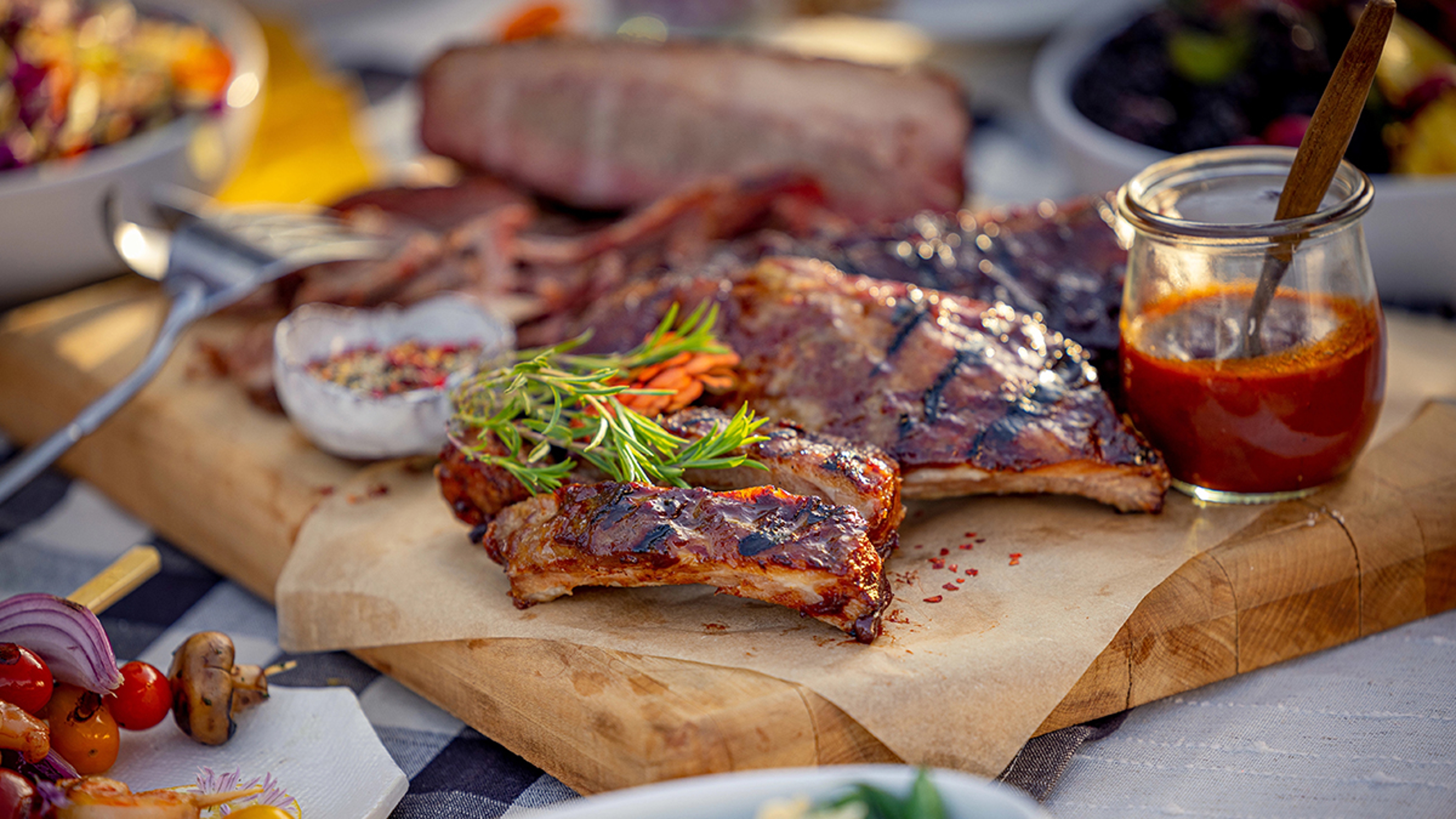
Barbecue this:
For world-class barbecue, try beef Brisket or baby-back pork ribs. Coat generously with salt, pepper, and spices like smoked paprika, garlic, and cayenne, or brown sugar, onion, and mustard, for serious flavor and punch.
Buttery wild Alaskan cod and plump wild Atlantic scallops are excellent barbecue picks from the sea. Brine or marinate them in olive oil, lemon juice, and herbs, then cook gently on the grill or a cedar plank, finishing with citrus butter or maple glaze.
BBQ 101: The word “barbecue” comes from the Taíno, an Indigenous Caribbean people who used a wooden structure called a barbacoa to slowly cook meat over fire. Spanish colonizers adopted the term and technique in the 1500s and brought it to the American South, where it evolved into a proud American ritual and regional tradition.
Secrets in the sauce
You probably know the two barbecue sauce “biggies” — Kansas City’s sweet tomato-molasses glaze and North Carolina’s sharp vinegar-and-pepper blend. Here are five more worth celebrating:
South Carolina’s “Gold Sauce” is a tangy-sweet blend of mustard, vinegar, brown sugar, and black pepper that’s perfect for pulled pork sandwiches.
Alabama “White Sauce” is a rich, creamy mix of mayo, apple cider vinegar, lemon juice, horseradish, and cracked black pepper that’s best served cold over smoked chicken or turkey.
Western Kentucky’s “Black Dip” is a thin, savory sauce made with Worcestershire, vinegar, black pepper, and sometimes a dash of chili flakes. Spoon it over smoked mutton (a local favorite) or pork chops.
To keep brisket moist, Texas cooks use what’s affectionately known as “Basting Sauce” — a mix of vinegar, beef drippings, garlic, chili powder, and paprika, brushed on liberally throughout the cook.
Finally, in Memphis (where dry rubs reign supreme), chefs often pair barbecued meats with “Finishing Sauce,” a thin, tangy cayenne, garlic, and tomato/vinegar blend served on the side for dipping.
READ MORE: The Complete Guide to BBQ Sauces
Fun Fact: In many places, the term “barbecue” isn’t a cooking technique but instead the act of cooking and eating outdoors, even if you’re technically just grilling. In Australia, a “barbecue” or “barbie” can also mean the grill itself, so “tossing shrimp on the barbie” isn’t barbecuing at all — it’s straight-up grilling. Same flames, different lingo.
Smoking: Building wood-fueled flavor from the inside out
Compared to grilling’s high heat and barbecue’s “low and slow” transformation, smoking infuses meat with deep, layered flavor. It doesn’t just cook; it permeates. Whether you use bold mesquite, sweet cherrywood, or mellow applewood, smoking builds richness from the inside out — delivering depth that no rub or glaze can match.
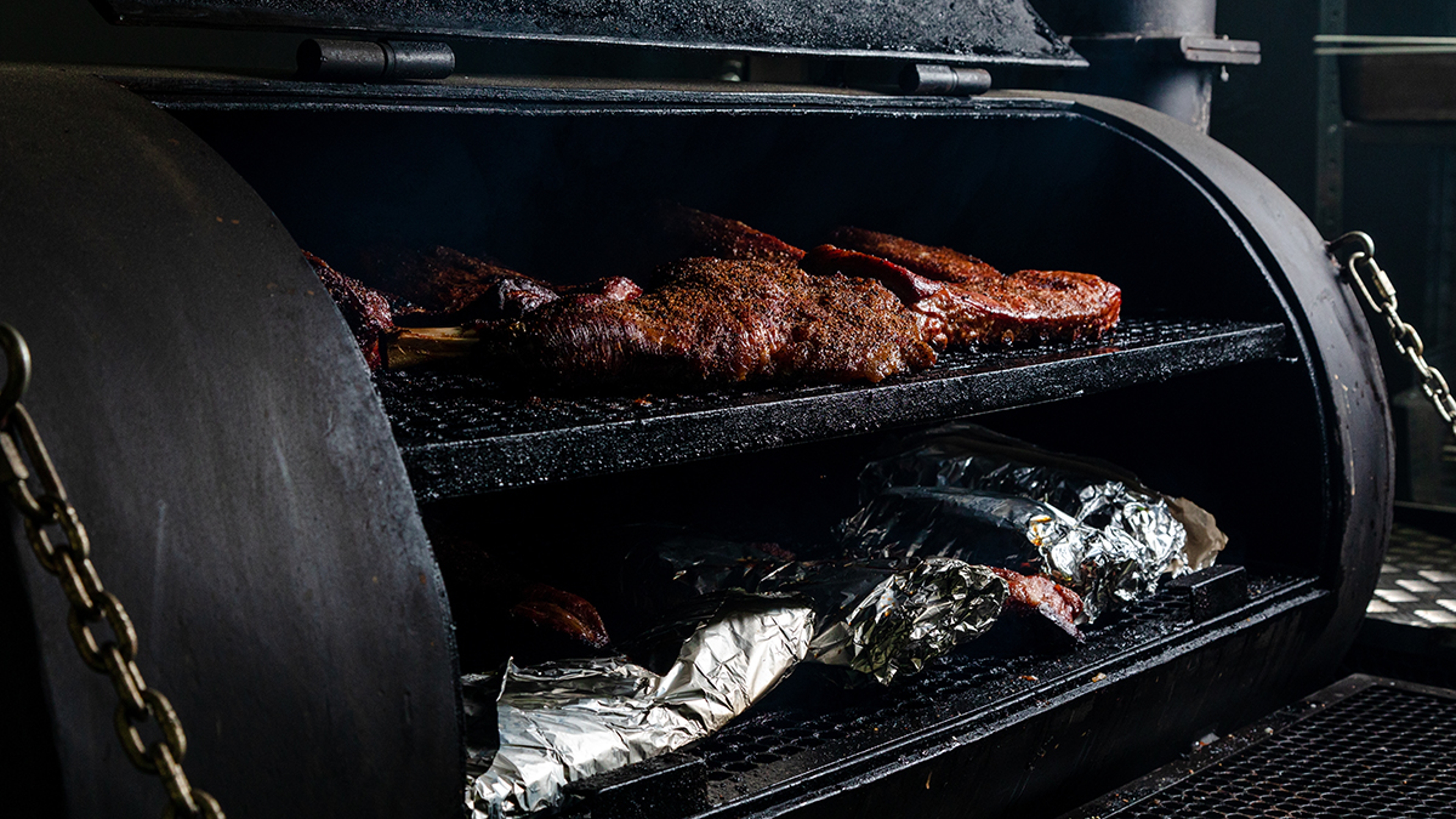
How to smoke:
Set up your smoker or grill for indirect heat and preheat to a steady, consistent 180°F to 225°F before adding your food.
Soak wood chips in water for 30 minutes. Place them in a smoker box or foil pouch with holes, and place it over your heat source to create flavorful smoke — use mesquite or hickory for rich red meats, and apple or cherry wood for lighter proteins like chicken or seafood.
Always include a water pan within your smoking setup to release moisture and help regulate the internal temperature of your cooking chamber.
Plan on 1 to 1½ hours of smoking time per pound for large cuts, and 30 to 60 minutes total for seafood or smaller items.
Smoke this:
Smoking prime rib is a game changer. Rub with rosemary, garlic, and black pepper, then smoke over oak or hickory to enhance the beef’s natural richness.
Wild Pacific king salmon is also perfect for smoking, thanks to its firm texture and high fat content. Use skin-on fillets with a brown sugar–paprika–dill rub and apple or cherry smoke for a sweet, tender finish.
Up in smoke: You can smoke meats on a standard grill using soaked wood chips in a smoker box or foil pouch, but dedicated smokers offer better insulation, shape, and airflow to keep temps stable and maximize smoke circulation. It’s the difference between taking a road trip in a reliable sedan… or cruising in a finely tuned roadster: Both will get you there, but one’s designed for the ride.
Preserving the past: Smoking began as a survival method. Long before refrigeration, Indigenous populations used smoke to preserve fish and game. But over time, those eating the food grew to love the deep, complex flavor, turning necessity into an enduring and unexpected cooking technique.
.svg?q=70&width=384&auto=webp)




